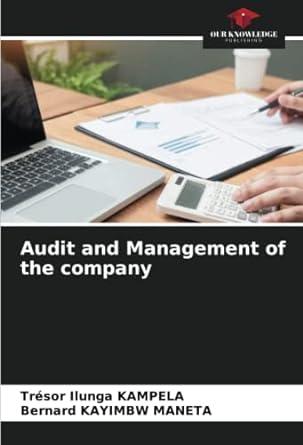CAFR Link:
http://www.naperville.il.us/globalassets/media/finance-documents/budget-audit-reports/cy2016cafr.pdf
Question:
Please answer a-c

3-1 Using the annual report obtained for Exercise 1-1,answer the following questions a. Review the Statement of Revenues, Expenditures, and Changes in Fund Balances for the governmental funds. List the revenue source classes. Are expenditures reported by character? List the functional classifications under the current character classification. Are Other Financing Sources and Uses presented separately? Does your report show transfers in? Transfers out? Capital leases? Proceeds of bonds? b. Review the Budgetary Comparison Schedule in the RSI section of your annual report (or Budgetary Comparison Statement, if that is used by your government) for the General Fund. Is the budgetary format used, or is the schedule in the format used for the Statement of Revenues, Expenditures, and Changes in Fund Balances? Does the report reflect the original budget, revised budget, and actual figures? Are variance columns presented comparing the actual with the revised budget and comparing the original with the revised budget? Is a reconciliation between the budgetary basis of accounting and GAAP presented on the budgetary comparison schedule or in a separate schedule? What are the major differences, if any? Are budgetary comparison schedules (or statements) presented for special revenue funds? Are all special revenue funds included? c. Review the note that describes the basis of budgeting (usually in the Summary of Significant Accounting Policies). Is the budget prepared on the GAAP basis or some other basis? Are the differences, if any, between the budgetary basis and GAAP clearly explained? 3-1 Using the annual report obtained for Exercise 1-1,answer the following questions a. Review the Statement of Revenues, Expenditures, and Changes in Fund Balances for the governmental funds. List the revenue source classes. Are expenditures reported by character? List the functional classifications under the current character classification. Are Other Financing Sources and Uses presented separately? Does your report show transfers in? Transfers out? Capital leases? Proceeds of bonds? b. Review the Budgetary Comparison Schedule in the RSI section of your annual report (or Budgetary Comparison Statement, if that is used by your government) for the General Fund. Is the budgetary format used, or is the schedule in the format used for the Statement of Revenues, Expenditures, and Changes in Fund Balances? Does the report reflect the original budget, revised budget, and actual figures? Are variance columns presented comparing the actual with the revised budget and comparing the original with the revised budget? Is a reconciliation between the budgetary basis of accounting and GAAP presented on the budgetary comparison schedule or in a separate schedule? What are the major differences, if any? Are budgetary comparison schedules (or statements) presented for special revenue funds? Are all special revenue funds included? c. Review the note that describes the basis of budgeting (usually in the Summary of Significant Accounting Policies). Is the budget prepared on the GAAP basis or some other basis? Are the differences, if any, between the budgetary basis and GAAP clearly explained







